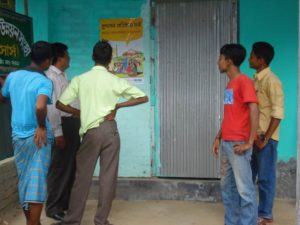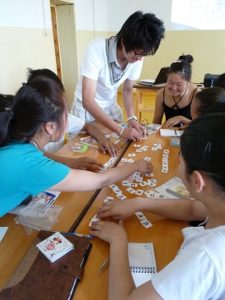
Many UNDEF projects have a campaigning or advocacy aspect. A targeted campaign can help achieve project outcomes including those related to: sharing information about a specific issue – for example, voting in an upcoming election; raising awareness of an entitlement or right – for example, access to particular government services; or involving the wider public in a particular advocacy goal – for example, campaigning to revise a specific law.
Key lessons:
- Hold discussions and conduct surveys with project stakeholders and participants to establish the specific needs of the target group of your campaign. It will also provide a baseline that enables you to assess the campaign’s impact once completed.
- Campaign audiences usually remember and respond well to visual information and examples, no matter whether received in print or animated formats, such as flyers, video spots, exhibitions or even street theatre play.
- If you intend to work with the media, plan carefully to ensure the budget covers all aspects, from airtime to design.
- Focus on key messages and emphasise the positive benefits of the change being advocated for – for example, the societal advantages that can be expected from equal participation of women in decision making processes.

Design media campaigns on the basis of audience needs and follow up on results
Not much thought was given to the design of the media campaign element of the project at its start. In planning for this element of the grantee could have included a qualitative market research component, even as simple as a few focus groups, to help assess impact and revise messages and materials accordingly. This would have also allowed an assessment of the impact of the media campaign.
From Project: Democracy for Women’s Rights in Sindh, Pakistan
Use visual information and concrete examples to help people learn
The grantee provided very useful, tangible and instrumental services which contributed to the project’s sustainability. The advocacy strategy framework developed very helpfully outlined the process of organising an advocacy campaign. It was very user friendly and explained clearly in a step by step practical way what needed to be done.
From Project: Strengthening Advocacy Capacity of Civil Society in The Gambia

There is competition for media time during elections: plan ahead
The grantee prepaid for the activities that it wanted to undertake after the official end of the project. This included the entire public awareness campaign (printing and disseminating posters and handouts, and media spots). This ensured that they had time slots available, as the time for the electoral campaign is very short in Mongolia, and other NGOs and CSOs found out the hard way that all of the available advertising time had already been bought out by the two main political parties when they tried to buy time closer to the elections.
From Project: Towards a better electoral process in Mongolia
Research results need to be accessible to a general audience
The field research undertaken as part of the project interviewed a wide sample of citizens and provided a precise diagnosis of the electoral behaviour of those communities, but the end-product was too academic and lacked digestible messages that could be easily communicated as part of sensitization activities.
From Project: Support for Democratic Transition and Promotion of Citizenship